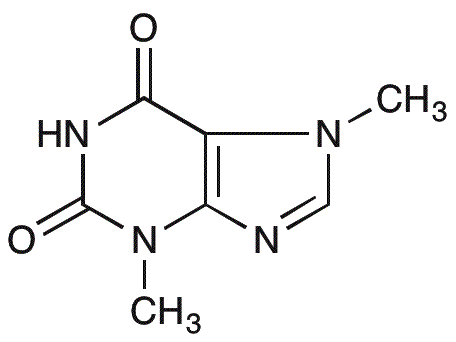Theobromine is widely utilized in research focused on:
- Food and Beverage Industry: Commonly found in chocolate, it enhances flavor and provides a mild stimulant effect, making it popular in various confectionery products.
- Pharmaceuticals: Used in medications for its vasodilating properties, it can help treat conditions like asthma and improve blood circulation.
- Cosmetics: Incorporated in skincare products for its antioxidant properties, it helps protect the skin from damage and improves hydration.
- Agriculture: Acts as a natural pesticide, helping to protect crops from pests without the harmful effects associated with synthetic chemicals.
- Health Supplements: Often included in dietary supplements for its potential to enhance mood and cognitive function, providing a natural alternative to caffeine.
General Information
Properties
Safety and Regulations
Applications
Theobromine is widely utilized in research focused on:
- Food and Beverage Industry: Commonly found in chocolate, it enhances flavor and provides a mild stimulant effect, making it popular in various confectionery products.
- Pharmaceuticals: Used in medications for its vasodilating properties, it can help treat conditions like asthma and improve blood circulation.
- Cosmetics: Incorporated in skincare products for its antioxidant properties, it helps protect the skin from damage and improves hydration.
- Agriculture: Acts as a natural pesticide, helping to protect crops from pests without the harmful effects associated with synthetic chemicals.
- Health Supplements: Often included in dietary supplements for its potential to enhance mood and cognitive function, providing a natural alternative to caffeine.
Documents
Safety Data Sheets (SDS)
The SDS provides comprehensive safety information on handling, storage, and disposal of the product.
Product Specification (PS)
The PS provides a comprehensive breakdown of the product’s properties, including chemical composition, physical state, purity, and storage requirements. It also details acceptable quality ranges and the product's intended applications.
Certificates of Analysis (COA)
Search for Certificates of Analysis (COA) by entering the products Lot Number. Lot and Batch Numbers can be found on a product’s label following the words ‘Lot’ or ‘Batch’.
*Catalog Number
*Lot Number
Certificates Of Origin (COO)
This COO confirms the country where the product was manufactured, and also details the materials and components used in it and whether it is derived from natural, synthetic, or other specific sources. This certificate may be required for customs, trade, and regulatory compliance.
*Catalog Number
*Lot Number
Safety Data Sheets (SDS)
The SDS provides comprehensive safety information on handling, storage, and disposal of the product.
DownloadProduct Specification (PS)
The PS provides a comprehensive breakdown of the product’s properties, including chemical composition, physical state, purity, and storage requirements. It also details acceptable quality ranges and the product's intended applications.
DownloadCertificates of Analysis (COA)
Search for Certificates of Analysis (COA) by entering the products Lot Number. Lot and Batch Numbers can be found on a product’s label following the words ‘Lot’ or ‘Batch’.
*Catalog Number
*Lot Number
Certificates Of Origin (COO)
This COO confirms the country where the product was manufactured, and also details the materials and components used in it and whether it is derived from natural, synthetic, or other specific sources. This certificate may be required for customs, trade, and regulatory compliance.


